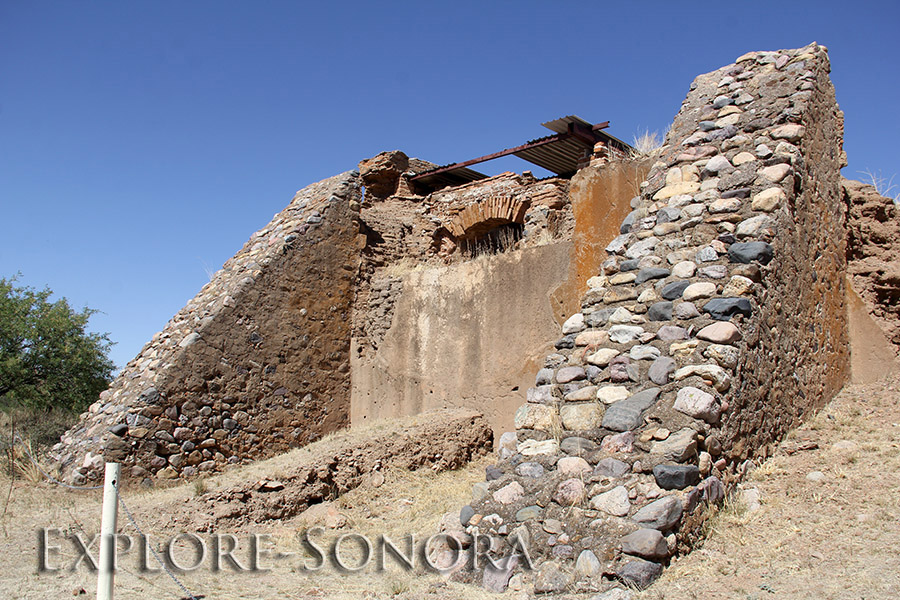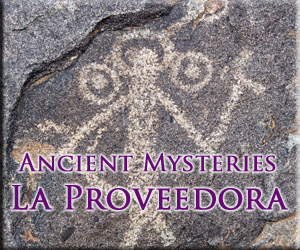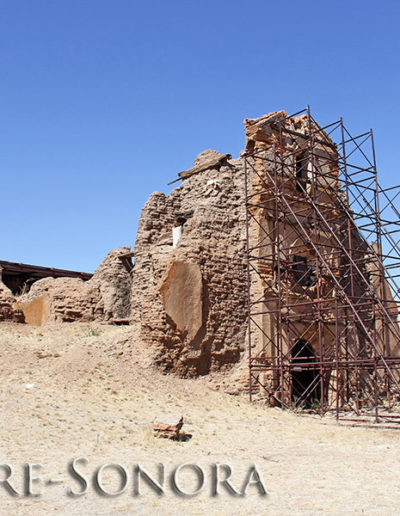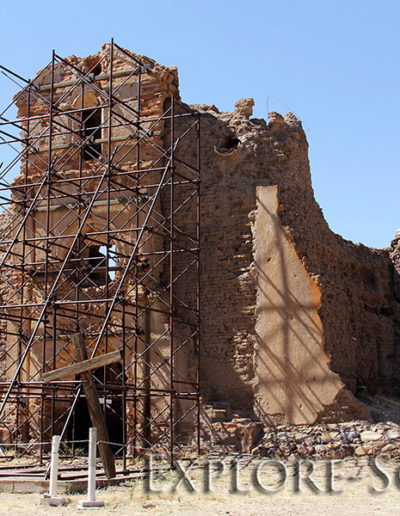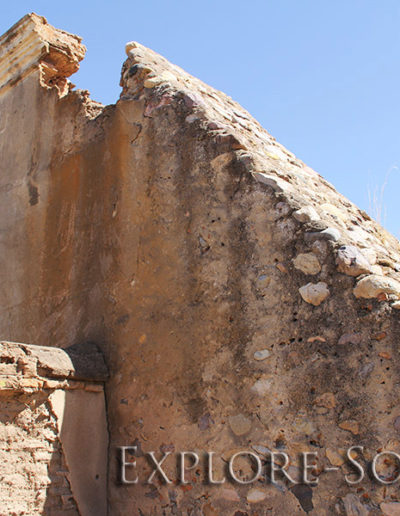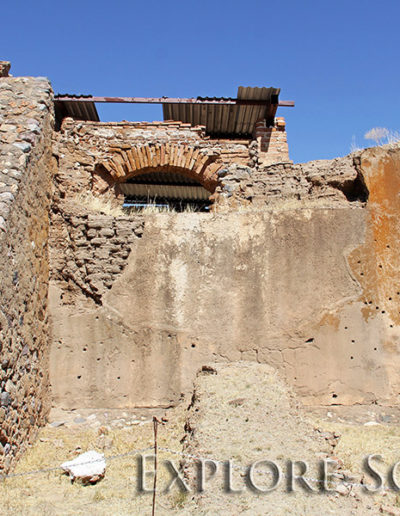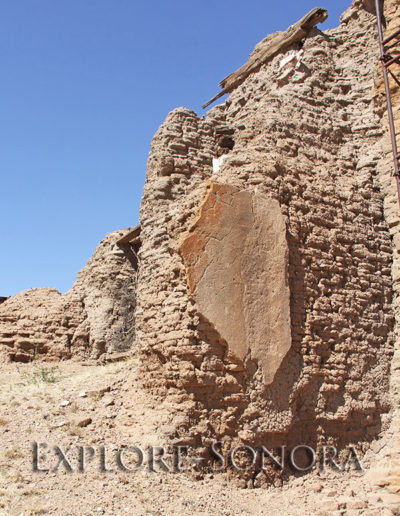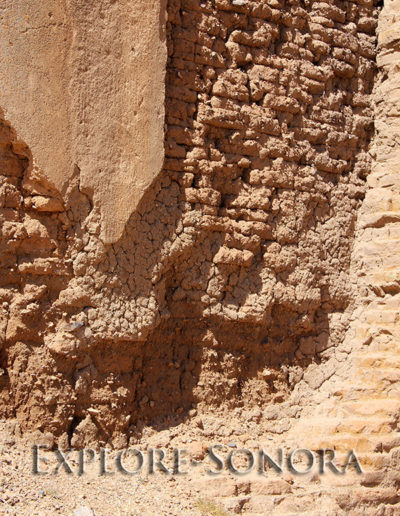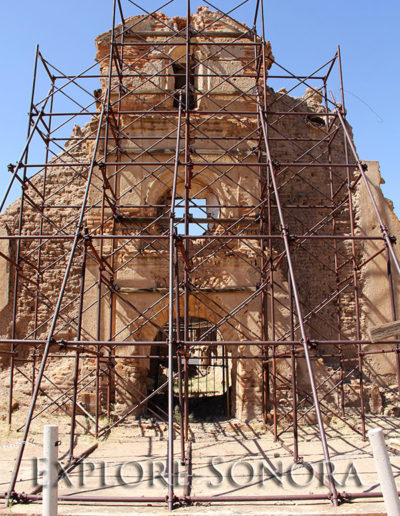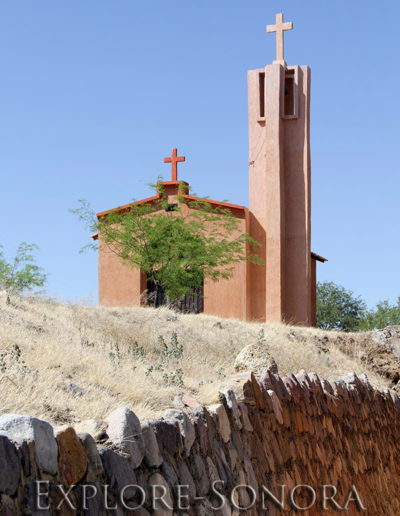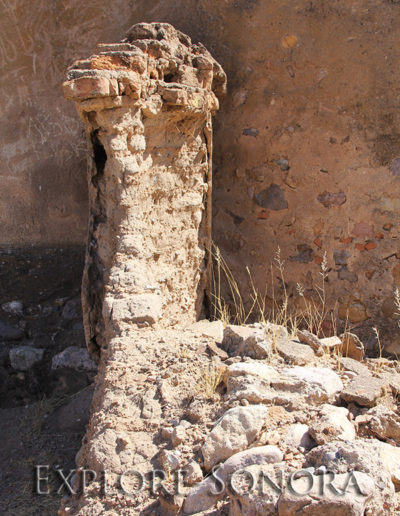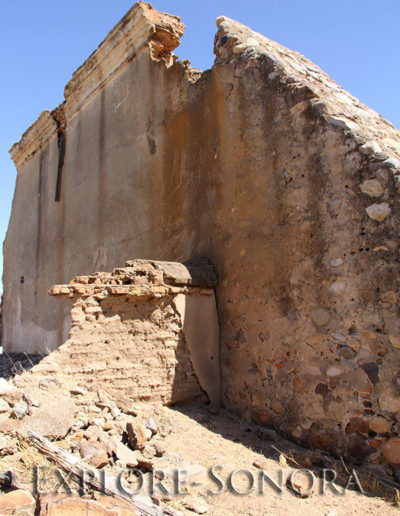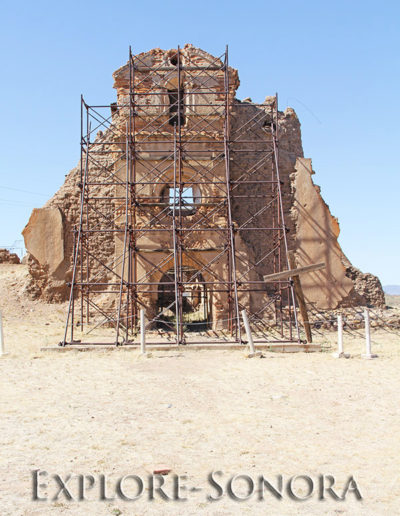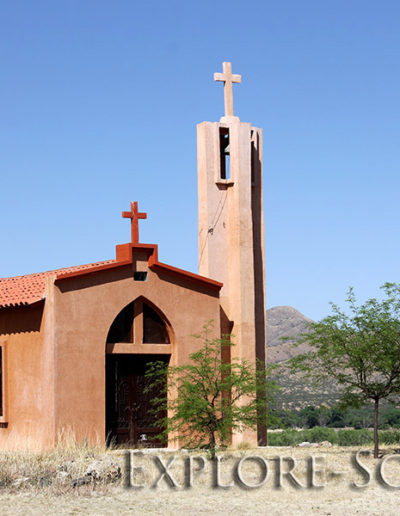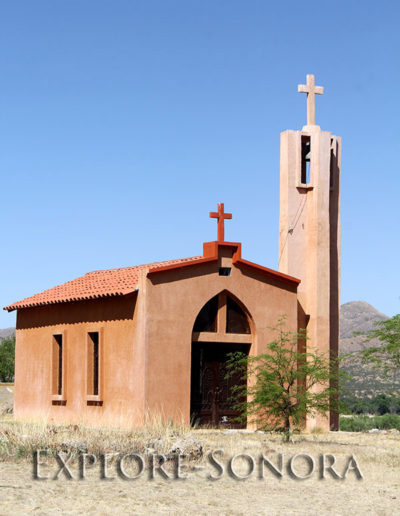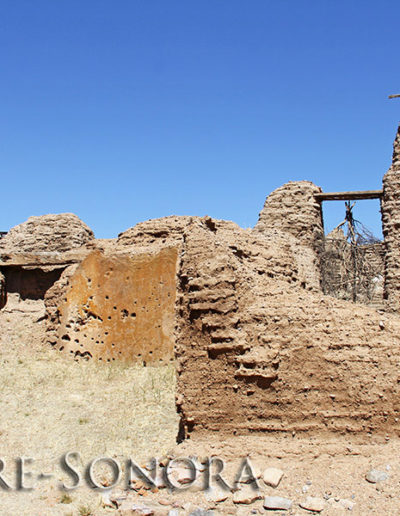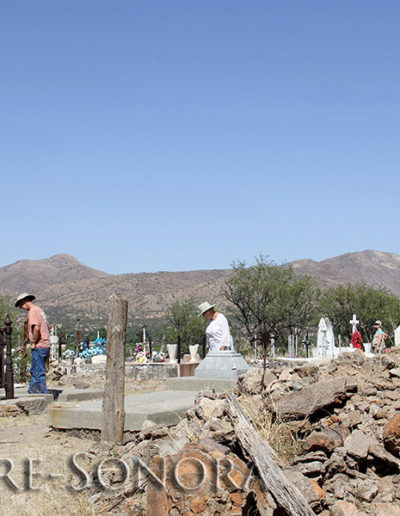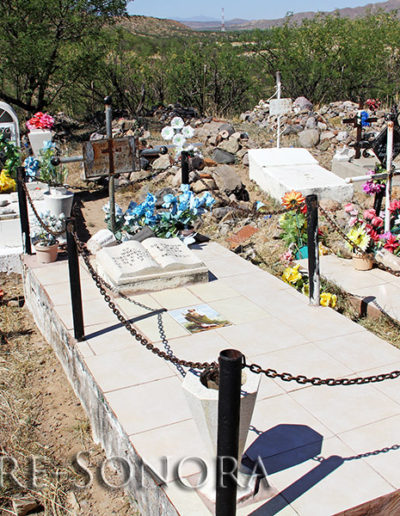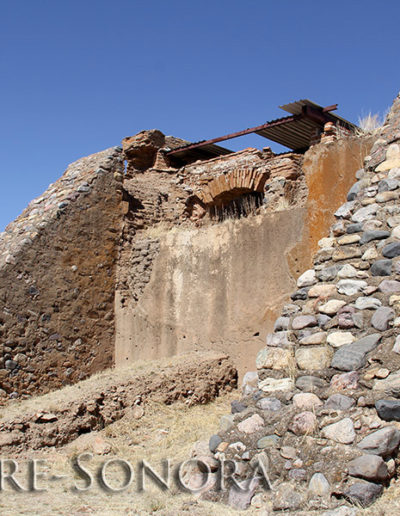Ruins of Kino Mission Nuestra Señora del Pilar y Santiago de Cocóspera
The ruins of the Kino Mission Nuestra Señora del Pilar y Santiago de Cocóspera are located on a hill near the Río Babasac, not far from Mexico highway 2 east of Imuris.
The mission ruins are representative of an original Kino mission that was built over and renovated decades later by the Franciscans. Its structural history has been preserved by front scaffolding installed several decades ago by Mexico’s National Institute of Anthropology and History (INAH) to help prevent the unique structure from collapsing.
The original Kino mission built at the end of the 17th century was made with basic adobe bricks. When the church was renovated a century later by Franciscans, they reinforced the adobe walls and buttressed the front with fired clay bricks held together with lime mortar. The new brick walls were then plastered over on both the interior and exterior facades.
The front side of the church had bell towers on both sides. Window openings were reinforced by wood around their exterior sills and wood posts inside the window opening. Wood was also used for the original flooring and construction of the roof and structural reinforcements. The Franciscans constructed wooden circular staircases in the bell towers, like the mesquite staircase in the Mission of San Ignacio.
The church interior was adorned by bas relief plaster impressions of commonly used mission symbols like scallop shells, used to represent pilgrimage as the symbol of the patron saint of Spain, San Santiago. Other examples of Kino missions where similar interiors have been restored are the missions at Tubutama and Caborca.
Cocóspera has similarities with the mission church of San Ignacio de Caborica, which is another example of where Franciscans rebuilt a Kino mission over its existing footprint by reinforcing the walls with clay bricks, enhancing the front entrance and towers, and covering the interior and exterior surfaces with plaster.
The reason for the marked difference between the appearance and condition of the structures today is that San Ignacio continued as an active church, where Cocóspera had been a target of Apache attacks since the late 1600’s, and by the early 1800’s the local population had dwindled, and the last Franciscan priest left the mission in 1836.
The small chapel crypt next to the ruins was built in the 1950’s by the family of Colonel José María Elías González, who lived in the Cocóspera area after he retired in 1851 until his death in 1864.




